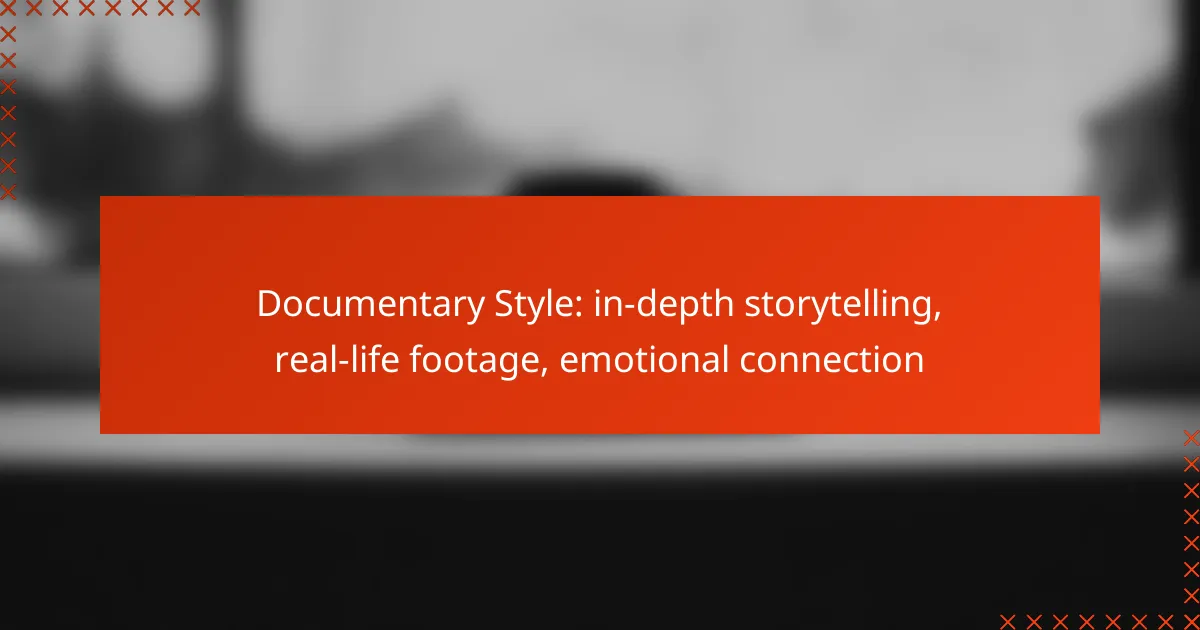Short films offer a unique platform for creative expression, allowing filmmakers to explore compelling narratives and innovative visuals within a limited timeframe. To succeed in the competitive landscape of film festivals, it’s essential to focus on strong storytelling, character development, and adherence to submission guidelines. By researching suitable festivals and crafting an engaging pitch, filmmakers can enhance their chances of standing out and gaining visibility in the industry.

How to create impactful short films?
Creating impactful short films involves crafting compelling narratives, utilizing creative visuals, and incorporating sound design. Focus on engaging storytelling and strong character development to resonate with your audience.
Focus on strong narratives
A strong narrative is the backbone of any impactful short film. Aim for a clear beginning, middle, and end, ensuring that the story is concise yet engaging. Consider using universal themes that evoke emotions, such as love, loss, or redemption.
To enhance your narrative, develop a central conflict that drives the story forward. This can be a personal struggle or an external challenge that the characters must overcome. Keep the plot tight, ideally within a runtime of 5 to 15 minutes.
Utilize creative visuals
Creative visuals can elevate your short film and captivate viewers. Experiment with unique camera angles, lighting, and color palettes to create a distinctive visual style. Consider how each shot contributes to the overall mood and message of the film.
Incorporate visual storytelling techniques, such as symbolism and metaphors, to add depth. Use practical effects or animation when appropriate, as these can enhance the narrative without overwhelming the viewer.
Incorporate sound design
Sound design plays a crucial role in shaping the audience’s experience. Use ambient sounds, sound effects, and music to create an immersive atmosphere. Choose a soundtrack that complements the emotional tone of your film.
Pay attention to dialogue clarity and volume levels, ensuring that they are balanced with other audio elements. A well-crafted sound design can significantly enhance the storytelling and emotional impact of your short film.
Engage with character development
Character development is essential for audience connection. Create multi-dimensional characters with distinct personalities, motivations, and arcs. Even in a short film, aim to show growth or change in your characters by the end.
Use concise backstories and visual cues to convey character traits quickly. This helps the audience relate to the characters and invest emotionally in their journeys, making the film more impactful.
Experiment with editing techniques
Editing is where your short film truly comes together. Experiment with pacing, transitions, and cuts to enhance the narrative flow. Consider using techniques like jump cuts or montages to convey time passing or to build tension.
Maintain a rhythm that matches the film’s tone, whether it’s fast-paced for action or slower for dramatic moments. A well-edited film can keep viewers engaged and effectively communicate your story in a limited timeframe.

What are the best practices for festival submissions?
To maximize your chances of success, focus on researching suitable festivals, adhering to their submission guidelines, crafting an engaging pitch, and including a high-quality trailer. These practices will help your short film stand out in a competitive landscape.
Research suitable festivals
Identifying the right festivals for your short film is crucial. Look for festivals that align with your film’s genre, themes, and target audience. Consider factors such as festival reputation, submission fees, and the types of films they typically showcase.
Utilize online databases and resources to compile a list of potential festivals. Websites like FilmFreeway and Withoutabox can provide insights into upcoming events and their specific requirements.
Follow submission guidelines
Each festival has its own submission guidelines, which are essential to follow closely. These guidelines often include specific formats for video files, length restrictions, and deadlines. Ignoring these can lead to disqualification.
Make a checklist of each festival’s requirements and ensure your submission meets all criteria before sending it. Double-check for any additional materials needed, such as press kits or bios.
Prepare an engaging pitch
Your pitch is your opportunity to capture the festival’s attention. Write a concise synopsis that highlights the unique aspects of your film, including its narrative focus and creative expression. Aim for clarity and impact.
Consider including a personal statement about your inspiration for the film. This can help festival programmers connect with your work on a deeper level.
Include a high-quality trailer
A well-crafted trailer can significantly enhance your submission. Aim for a trailer that is around one to two minutes long, showcasing the film’s best moments while maintaining intrigue. Use high-quality visuals and sound to reflect the production value of your film.
Ensure the trailer is easily accessible and compatible with the submission platform. A strong trailer can be a deciding factor for festival selection committees, so invest time in its creation.

Which festivals are ideal for short films in the USA?
Several prestigious festivals in the USA are particularly well-suited for showcasing short films. These events not only provide visibility but also valuable networking opportunities for filmmakers.
Sundance Film Festival
The Sundance Film Festival is one of the most renowned platforms for independent filmmakers, including those focusing on short films. Held annually in Park City, Utah, it attracts a global audience and industry professionals, making it a prime venue for exposure.
Filmmakers should consider submitting their work early, as the competition is fierce. The festival typically features a diverse range of genres, so ensuring your short film stands out with a unique narrative or creative approach is crucial.
Tribeca Film Festival
Located in New York City, the Tribeca Film Festival is known for its focus on innovative storytelling and diverse voices. It offers a dedicated category for short films, providing a platform for emerging filmmakers to present their work to a vibrant audience.
When submitting to Tribeca, filmmakers should highlight the originality of their narrative and the emotional impact of their film. Engaging with the festival’s community through events and panels can also enhance networking opportunities.
South by Southwest (SXSW)
South by Southwest (SXSW) is a unique festival that combines film, music, and interactive media, making it an exciting venue for short films. Held in Austin, Texas, SXSW attracts a creative crowd and offers filmmakers the chance to connect with industry leaders.
Filmmakers should focus on how their short film fits within the broader cultural context of SXSW. Engaging with audiences through Q&A sessions and networking events can significantly enhance the visibility of their work.
Los Angeles Film Festival
The Los Angeles Film Festival is a key event for filmmakers looking to make connections in the heart of the entertainment industry. It showcases a variety of short films, providing an opportunity for local and international filmmakers to gain recognition.
Submitting a short film that reflects the unique aspects of Los Angeles or the broader film industry can be advantageous. Filmmakers should also take advantage of the festival’s workshops and panels to learn from industry veterans and network effectively.

What are common challenges in short film production?
Short film production often faces several challenges that can impact the final product. Key issues include budget constraints, time limitations, difficulties in assembling the right crew, and securing suitable locations for filming.
Budget constraints
Budget constraints are a significant hurdle in short film production, as many filmmakers operate with limited financial resources. This often means making tough decisions about equipment, cast, and crew, which can affect the overall quality of the film.
To manage a tight budget, prioritize essential expenses and consider alternative funding sources like crowdfunding or grants. Keep in mind that even a modest budget can yield impressive results with creativity and resourcefulness.
Time limitations
Time limitations can severely restrict the production process, from pre-production planning to post-production editing. Filmmakers often have to work within tight schedules, which can lead to rushed decisions and compromises on quality.
To mitigate time constraints, create a detailed production timeline and stick to it. Allocate sufficient time for each phase and be realistic about what can be achieved within the available timeframe.
Finding the right crew
Assembling the right crew is crucial for a successful short film, but it can be challenging due to varying skill levels and availability. A well-functioning team can enhance creativity and efficiency, while a mismatched crew may hinder progress.
Network within local film communities and utilize online platforms to find skilled individuals who share your vision. Conduct interviews and auditions to ensure compatibility and commitment to the project.
Securing locations
Securing locations for filming can be a complex process, often involving permissions, permits, and negotiations. The right location can significantly enhance the film’s aesthetic, but finding and obtaining access to these sites can be time-consuming and costly.
Start scouting locations early and consider alternatives that may be more accessible or affordable. Always check local regulations regarding filming permits and ensure you have the necessary permissions before shooting to avoid legal issues.

How to effectively market short films online?
To effectively market short films online, filmmakers should leverage digital platforms to reach their target audience and create a strong online presence. This involves using social media, building a dedicated website, and engaging with film communities to promote their work.
Utilize social media platforms
Social media platforms like Instagram, Facebook, and Twitter are essential for promoting short films. Filmmakers can share trailers, behind-the-scenes content, and updates to engage potential viewers. Regular interaction with followers can build a loyal fan base.
Consider creating a content calendar to plan posts in advance, ensuring a consistent online presence. Use relevant hashtags to increase visibility and connect with film enthusiasts. Collaborating with influencers or other filmmakers can also expand reach.
Create a dedicated website
A dedicated website serves as a central hub for your short film, providing essential information and resources. Include a synopsis, cast and crew details, and links to watch the film. A well-designed site can enhance credibility and attract more viewers.
Incorporate a blog to share updates, insights, and festival experiences, which can improve search engine visibility. Ensure the website is mobile-friendly and optimized for SEO to reach a broader audience. Consider offering a newsletter sign-up to keep interested viewers informed about future projects.



